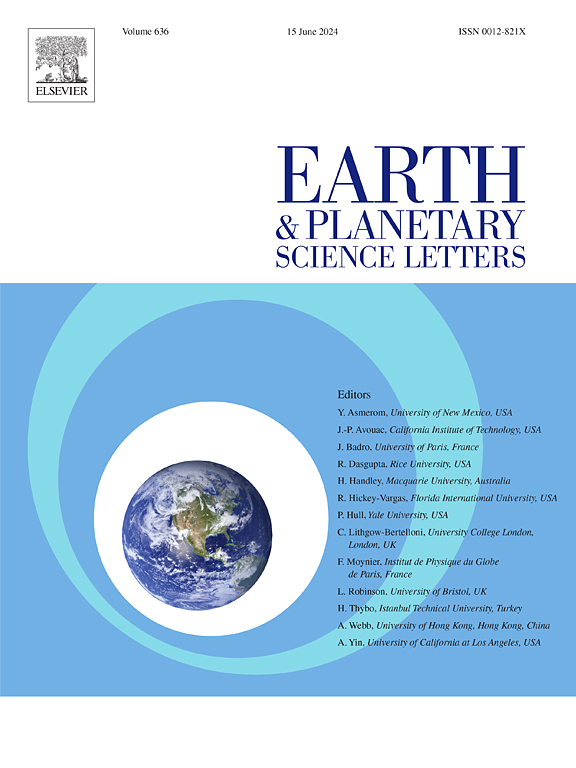A significant doubling of rockfall rates since the Little Ice Age in the Mont-Blanc massif, inferred from 10Be concentrations and rockfall inventories
IF 4.8
1区 地球科学
Q1 GEOCHEMISTRY & GEOPHYSICS
引用次数: 0
Abstract
By combining cosmogenic nuclide data and rockfall inventories, we have employed a rigorous methodology to focus on long-term erosion trends and the increase in rockfall in the Mont-Blanc massif (European Alps) over the last century. To do this, we used mathematical formulations based on power law integration, which enabled us to identify the complex links between rockfall distribution and erosion rates. Our approach was applied to the Mer de Glace basin (Mont-Blanc massif), where we combined analyses of 10Be concentration in the supraglacial load (based on 8 samples) with Terrestrial Laser Scanning (TLS) data capturing 123 rockfalls ranging from 1 to 566 m3, as well as direct observations of 71 rockfalls ranging from 100 to 20,000 m3. Within the overlapping volume range of both inventories, power law fitting yields a common exponent (b-value) of 0.75 ± 0.18. However, the TLS-derived rockfall rate (ā in m-2.yr-1) is approximately 5 times higher than that derived from the observation-based inventory. This difference is probably linked to the current intense permafrost degradation affecting scanned rockwalls at altitudes below 3800 m a.s.l. The 20,000 m3 rockfall documented by the network of observers has a statistical return time estimated at <6 years, which suggests that larger or more significant rockfalls will occur in the future. Based on a two-segment power law, the erosion rate is estimated at > 4.1 mm.yr-1 for the period 2006–2011.
According to our study of glacial dynamics, the supraglacial clasts sampled aggregate ̴800 rockfalls greater than 1 m3 that occurred diachronically between 1845 and 1987 but whose cumulative total corresponds to <7 years of present rockwall erosion rate in the upper Mer de Glace basin. The mean 10Be concentration of the 8 supraglacial samples is 2.7 ± 1.3 104 at.g-1 and was obtained when exposing rock faces subjected to erosion of <1.2 ± 1 mm.yr-1. The erosion rate would, therefore, have significantly increased between the Little Ice Age (maximum 2.2 mm.yr-1 from 10Be result) and the beginning of the 21st century (minimum 4.1 mm.yr-1 for 2003–2011 surveys). These erosion rates do not consider past volume rockfalls greater than those observed recently and are minimal erosion rate estimates. Nevertheless, they highlight the increase in mass movement hazards linked to global warming via permafrost degradation in high-altitude rockwalls.
求助全文
约1分钟内获得全文
求助全文
来源期刊

Earth and Planetary Science Letters
地学-地球化学与地球物理
CiteScore
10.30
自引率
5.70%
发文量
475
审稿时长
2.8 months
期刊介绍:
Earth and Planetary Science Letters (EPSL) is a leading journal for researchers across the entire Earth and planetary sciences community. It publishes concise, exciting, high-impact articles ("Letters") of broad interest. Its focus is on physical and chemical processes, the evolution and general properties of the Earth and planets - from their deep interiors to their atmospheres. EPSL also includes a Frontiers section, featuring invited high-profile synthesis articles by leading experts on timely topics to bring cutting-edge research to the wider community.
 求助内容:
求助内容: 应助结果提醒方式:
应助结果提醒方式:


